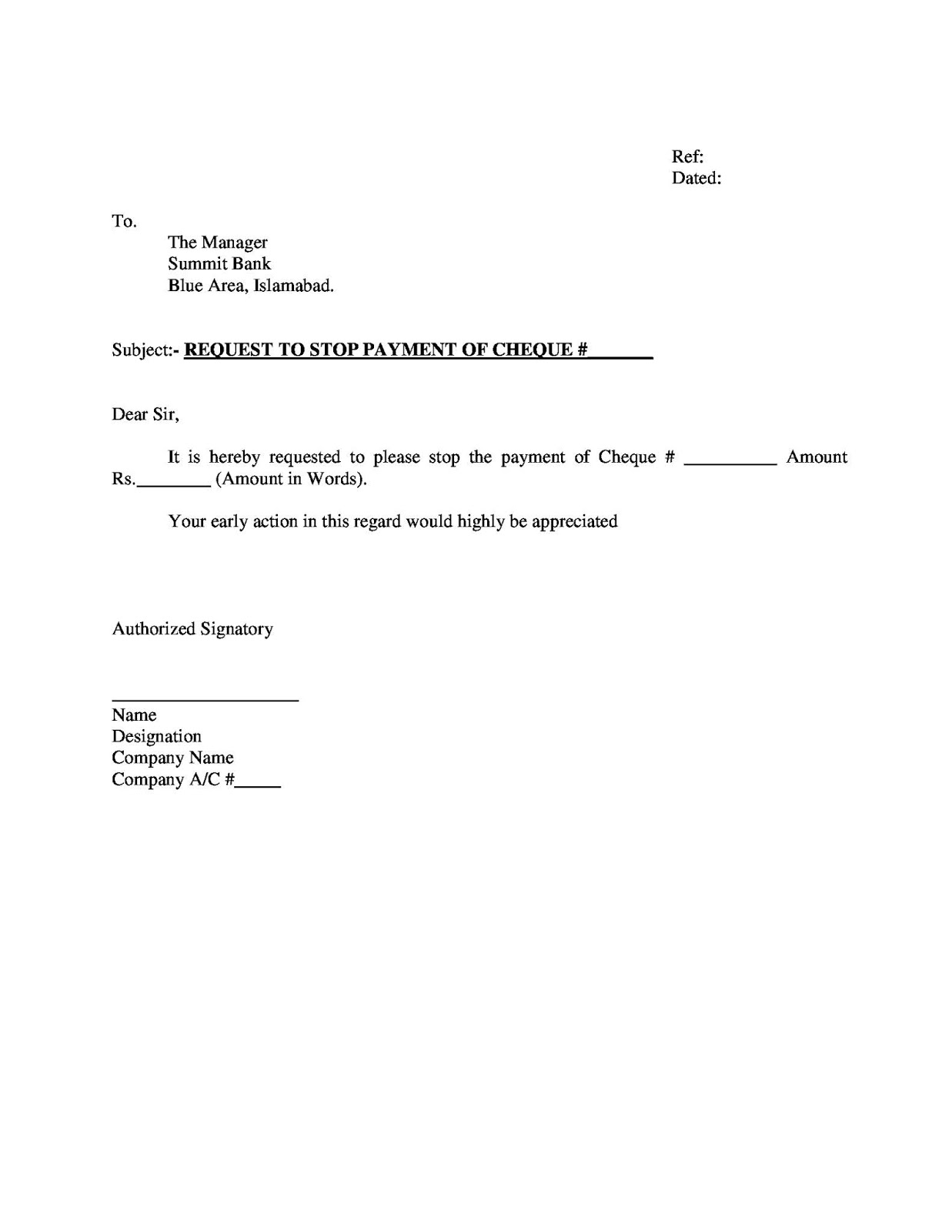Stopping Payment: The Definitive Guide to Bank Cheque Cancellation Letters
Ever sent a cheque and then had that sinking feeling that something's not right? Maybe you sent it to the wrong person, or the amount was incorrect. Whatever the reason, knowing how to stop a cheque is crucial. This involves writing a bank cheque cancellation letter, a surprisingly powerful tool in your financial arsenal.
A bank cheque cancellation request, sometimes called a stop payment order, is a formal instruction you give your bank to halt payment on a specific cheque. This process essentially renders the cheque void, preventing the recipient from cashing it. Think of it as a digital ejector seat for your money, pulling it back just before it lands in the wrong hands.
But how do you write a cheque stop payment request that's effective? It's more than just scribbling a note. There's a specific structure and information required to ensure your request is processed quickly and accurately. This guide will explore the nuances of writing a robust cheque cancellation letter, providing you with the knowledge and confidence to manage your finances effectively.
From understanding the essential elements of the letter format to navigating the complexities of different banking systems, we'll cover everything you need to know. We'll delve into the history of cheque cancellation, exploring how this vital process has evolved over time. We’ll even uncover some fascinating trivia, like the origins of the cheque itself and its surprising link to ancient banking practices.
Mastering the art of writing a cheque stop payment letter can save you from potential financial headaches. It’s a vital skill in today’s fast-paced financial world. This comprehensive guide will empower you with the knowledge and tools to protect your funds and navigate the banking system with confidence.
The importance of a correctly formatted cheque cancellation letter cannot be overstated. An incorrectly formatted letter can lead to delays in processing your request, which could potentially result in the cheque being cashed regardless. Clear communication is key to ensuring your bank understands your request and acts upon it swiftly.
A typical cheque cancellation letter format includes your account information, the cheque number, the date of the cheque, the amount, the payee's name, and the reason for cancellation. Some banks may also require additional information, such as a contact phone number.
One benefit of knowing how to write a cheque cancellation letter is the immediate peace of mind it provides. Knowing you have the ability to stop a potentially problematic cheque offers a sense of control over your finances. Another benefit is the potential to avoid financial loss. By stopping a fraudulent or incorrect cheque, you protect your funds from being wrongly disbursed.
To write a cheque cancellation letter, start by including your name, address, and account number. Then, clearly state your request to stop payment on a specific cheque. Provide all necessary details of the cheque, including the cheque number, date, amount, and payee. Briefly explain the reason for cancellation. Finally, sign and date the letter.
Advantages and Disadvantages of Cancelling a Cheque
| Advantages | Disadvantages |
|---|---|
| Prevents fraudulent transactions | May incur fees |
| Corrects errors | Requires prompt action |
| Provides peace of mind | Not always guaranteed |
Best Practices: 1. Act quickly. 2. Keep records. 3. Follow up with the bank. 4. Use online banking if available. 5. Confirm cancellation.
FAQs: 1. How long does it take to stop a cheque? 2. Is there a fee? 3. Can I cancel a certified cheque? 4. What if the cheque has already been cashed? 5. What information do I need? 6. Can I do this online? 7. What happens if I don't have all the details? 8. Who do I contact if I have problems?
Tips & Tricks: Keep a copy of the letter for your records. Note down the date and time you submitted your request. Follow up with your bank if you don’t hear back within a reasonable timeframe. Utilize online banking tools for quicker processing, if available.
In conclusion, understanding the bank cheque cancellation letter format is a crucial aspect of managing your personal finances. It empowers you to take control of your money, prevent potential financial losses, and navigate the banking system effectively. From avoiding fraudulent transactions to simply correcting errors, a well-crafted cheque cancellation letter provides peace of mind and financial security. By learning the format, following the best practices, and staying informed, you can confidently protect your funds and manage your finances with ease. Don’t underestimate the power of this simple yet effective tool. Mastering the art of the cheque cancellation letter can save you time, money, and unnecessary stress in the long run. Take the time to familiarize yourself with this process and you'll be well-equipped to handle any cheque-related issues that may arise. Remember to keep a copy of your submitted letter and follow up with your bank for confirmation. Your financial well-being is worth the effort.
The silent symphony of torque decoding wheel fastener tightening
Frag the explosive history and meaning of a gaming term
Beyond apples celebrating teachers with gambar mewarnai selamat hari guru














